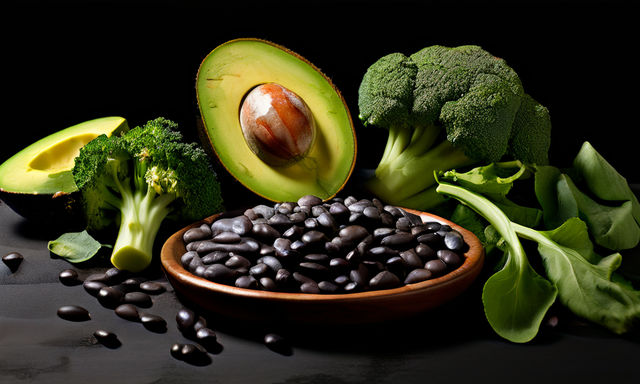What 10g of Fiber Looks Like Video
Fiber plays a crucial role in a healthy diet, supporting digestive health, aiding in weight management, and helping to lower cholesterol levels. However, many people struggle to consume enough fiber each day. The daily recommended intake for adults ranges from 25 to 38 grams, depending on age and gender, but understanding what that looks like in terms of food portions can be challenging. In this article, we'll explore what 10 grams of fiber looks like across a variety of foods to help you make informed dietary choices and meet your fiber goals.
What is Fiber?
Dietary fiber, found in plant-based foods, is the indigestible part of carbohydrates that passes through the digestive system, aiding in bowel movement regularity and promoting a healthy gut microbiome. Fiber comes in two main types: soluble and insoluble. Soluble fiber dissolves in water and can help lower cholesterol and blood sugar levels, while insoluble fiber adds bulk to stools, assisting with regularity and preventing constipation.
Daily Fiber Recommendations
The American Heart Association suggests a daily fiber intake of 25 grams for women and 38 grams for men, yet the average adult only consumes about 15 grams per day. Meeting these recommendations can significantly improve your health, reducing the risk of diabetes, heart disease, and some forms of cancer.
Foods That Add Up to 10 Grams of Fiber
Understanding portion sizes and the fiber content of foods can empower you to more easily incorporate high-fiber choices into your meals and snacks. Here’s what 10 grams of fiber looks like in a variety of foods:
1. Vegetables
- - Broccoli: Approximately 3 cups of chopped broccoli contribute about 10 grams of fiber. Broccoli can be steamed, roasted, or stir-fried, offering versatility in meal planning.
- - Avocado: One whole medium avocado contains roughly 10 grams of fiber. It's perfect for spreads, salads, or as a nutritious addition to smoothies.
2. Legumes
- - Black beans: About ¾ cup of cooked black beans contains around 10 grams of fiber. Beans are versatile and can be added to salads, soups, and stews.
- - Lentil Pasta: About 1 cup of cooked lentil pasta offers 10 grams of fiber, providing a high-fiber, gluten-free alternative to traditional pasta.
3. Nuts and Seeds
- - Chia Seeds: Just two tablespoons of chia seeds contain about 10 grams of fiber. They can be sprinkled over yogurt or added to smoothies.
- - Almonds: Eating about ⅔ cup of almonds offers 10 grams of fiber. These nuts are a hearty addition to snacks or salads.
4. Fruits
- - Raspberries: Approximately 1.5 cups of fresh raspberries will give you 10 grams of fiber, great for a snack or added to breakfast cereals.
- - Apple: Eating four small apples, with the skin, provides about 10 grams of fiber. Apples are a convenient and tasty way to boost your fiber intake.
5. Supplements
- - Psyllium Husk: Just two tablespoons of psyllium husk pack about 10 grams of fiber. This supplement can be added to smoothies, yogurt, or water to boost your daily fiber intake dramatically.

Tips for Meeting Your Fiber Goals
Meeting your fiber goals can be easier with these helpful tips:
- 1. Diversify Your Sources: Aim to get fiber from a variety of foods, including fruits, vegetables, whole grains, legumes, and nuts.
- 2. Gradually Increase Intake: If your diet is low in fiber, increase your intake gradually to avoid digestive discomfort.
- 3. Stay Hydrated: Drinking plenty of water helps fiber move through the digestive system more easily.
- 4. Combine Fiber Sources: Mix high-fiber foods together to create meals and snacks that support a balanced diet.
Conclusion
Understanding what 10 grams of fiber looks like in various foods can significantly help you plan your meals and ensure you're getting enough of this crucial nutrient. Fiber not only supports digestive health but also contributes to overall well-being by preventing chronic diseases and helping manage weight. With a diverse range of fiber-rich foods available, incorporating the necessary amounts into your diet can be both delicious and beneficial.
Disclaimer: This blog post is for informational purposes only and does not constitute medical advice. Always consult with a healthcare professional before making significant changes to your diet, especially if you have specific health conditions or dietary needs.
Ready to level-up?
Create meal plans 10x faster, follow up with your clients through our mobile app, and never struggle with meal planning or recipe management again.